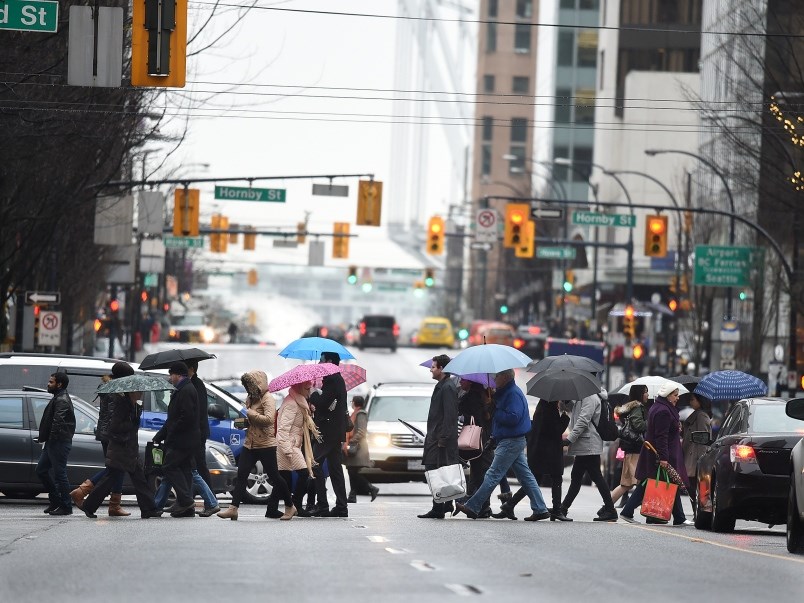Most of you probably know that 53 per cent of Â鶹´«Ã½Ó³»households are renters — and pay a heck of a lot more than 30 per cent of their income to live in someone else’s home.
Many of us in the media have reported that fact for several years.
But did you know that 29 per cent of families with children in Â鶹´«Ã½Ó³»are led by a lone parent?
I didn’t, but learned of that statistic and others by reading that went before city council Wednesday. The 93-page report was related to the city’s grant program.
This year, the city will hand out 255 grants totalling $9.6 million.
The report indicated the vast majority of funding was for social grants.
“In a context of a city that — despite being considered among the most liveable cities in the world — is a city in which many residents face acute and persistent inequities across the social determinants of health,” the report said.
Neighbourhood organizations, Indigenous groups, school food programs, childcare agencies, job creation centres for low-income people and various social services are among the recipients.
Which is good news.
But my purpose here is not to break down the details of each proposal, but to provide some more stats from the report about the Â鶹´«Ã½Ó³»you think you know in 2020.
The data was collected by the city through various reports from Statistics Canada, Â鶹´«Ã½Ó³»Coastal Health, the B.C. Coroners Service, the University of B.C. and others.
In no particular order, some facts:
- Forty-eight per cent of Â鶹´«Ã½Ó³»residents were born outside Canada.
- Forty-four per cent of residents have a first language other than English.
- More than half of residents are identified as members of a racialized group.
- Fifteen per cent of residents are 65 years old and over, with this group making up more than half of net population growth from 2011 to 2016.
- The percentage of Vancouverites who rate their mental health as excellent or very good (52 per cent) is lower than the Metro Â鶹´«Ã½Ó³»average (57 per cent).
- About one in four residents report having access to health, community and social services when they need them.
- Thirty-five per cent of children enter kindergarten with physical, social, emotional, communication or language vulnerabilities that impact their readiness for school.
- Twenty per cent of Â鶹´«Ã½Ó³»residents live below Canada’s recently adopted poverty line, and more than 40 per cent of those have total family incomes below the equivalent of a living wage.
- Only 54 per cent of adults in Â鶹´«Ã½Ó³»feel a strong sense of belonging, and only 50 per cent of adults have four or more people in their support network to turn to for help.
Council happened to be discussing the grant proposals on the same day Statistics Canada released the Canadian Income Survey, which had some good news for British Columbia.
The province’s overall poverty rate was 8.9 per cent in 2018 compared to 12 per cent in 2016. B.C.’s child poverty rate dropped to 6.9 per cent in 2018 from 12 per cent in 2016.
The decline in the child poverty rate has been consistent across the country, with 566,000 children living below the poverty line in 2018 in Canada compared to one million in 2012.
Provincial and federal governments point to what they commonly refer to as poverty reduction strategies for declines in child poverty.
More housing, more affordable childcare and grants such as the feds’ Canada Child Benefit and Child Opportunity Benefit are often cited as initiatives.
Before I close, I wanted to go back to that stat near the top of this piece to remind you that 29 per cent of families with children in Â鶹´«Ã½Ó³»are led by a lone parent.
The Stats Can income survey states the obvious that children in lone-parent families remain more vulnerable to poverty. In fact, the child poverty rate in Canada in 2018 was 26.2 per cent for a family headed by a single woman.
Unequal pay, the high cost of housing, childcare and nutritious food, along with inflationary costs associated to living in an expensive city, are often cited as reasons.
For the record, the child poverty rate in Canada was 5.8 per cent in Canada for those living in couple families.
Which brings me to the released in January by the B.C. child and youth advocacy coalition First Call, which noted one in five children in the province were still growing up in poverty.
Of the 163,730 children counted as living in poverty, more than 51,000 were under the age of six, the report said.
While First Call welcomed a slight decline in poverty rates, it noted that an all-party House of Commons committee passed a resolution 30 years ago to end child poverty by the year 2000.
That was 20 years ago.
More recently, from the B.C. government is to reduce overall poverty by 25 per cent and child poverty by 50 per cent by 2024.
That’s four years away.
“All levels of government must ensure poverty reduction strategies are properly resourced, targeted at the most marginalized families and implemented in a timely way,” the First Call report concluded.
“Children can’t wait.”
@Howellings
Read more from the



